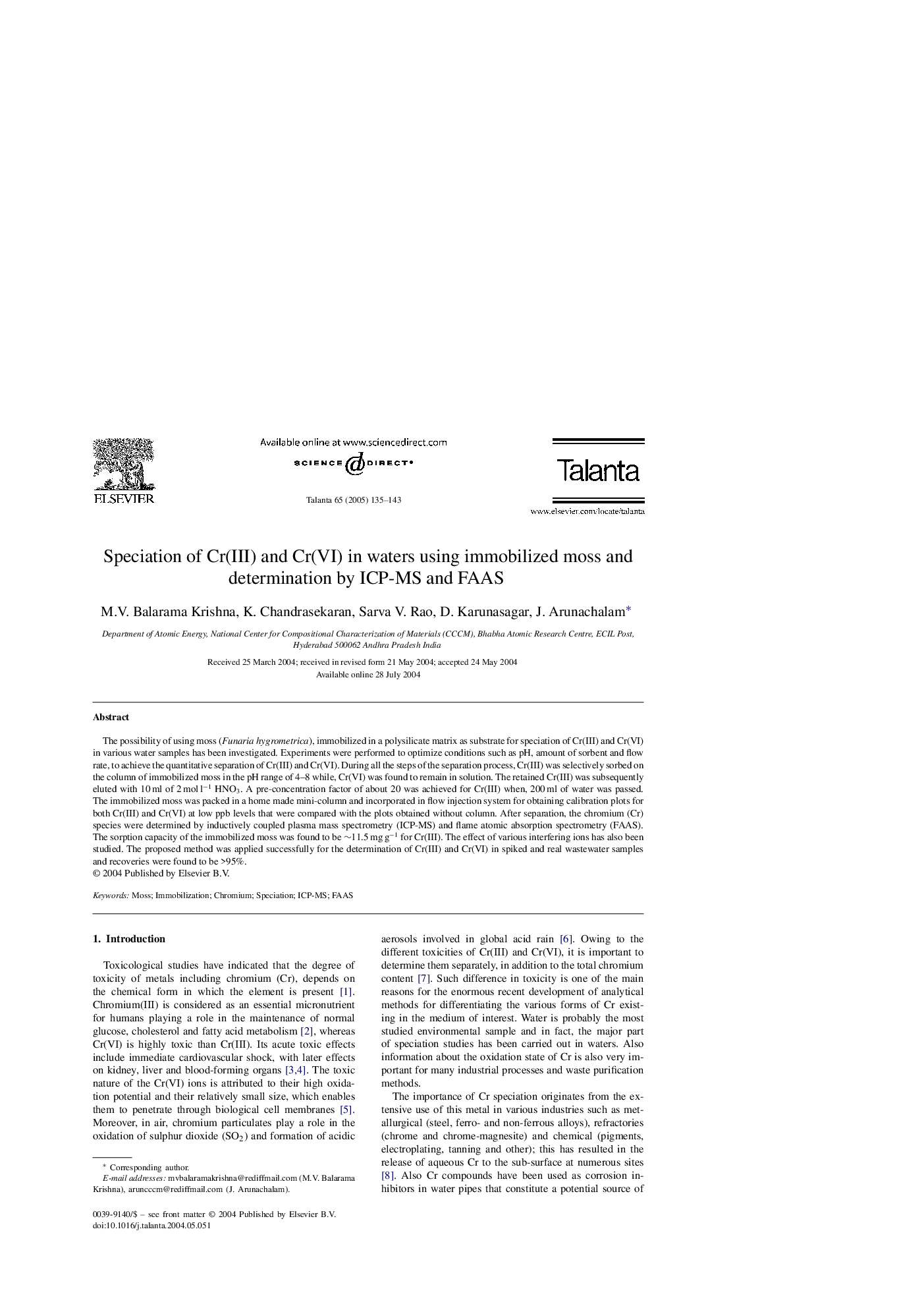| Article ID | Journal | Published Year | Pages | File Type |
|---|---|---|---|---|
| 10560209 | Talanta | 2005 | 9 Pages |
Abstract
The possibility of using moss (Funaria hygrometrica), immobilized in a polysilicate matrix as substrate for speciation of Cr(III) and Cr(VI) in various water samples has been investigated. Experiments were performed to optimize conditions such as pH, amount of sorbent and flow rate, to achieve the quantitative separation of Cr(III) and Cr(VI). During all the steps of the separation process, Cr(III) was selectively sorbed on the column of immobilized moss in the pH range of 4-8 while, Cr(VI) was found to remain in solution. The retained Cr(III) was subsequently eluted with 10 ml of 2 mol lâ1 HNO3. A pre-concentration factor of about 20 was achieved for Cr(III) when, 200 ml of water was passed. The immobilized moss was packed in a home made mini-column and incorporated in flow injection system for obtaining calibration plots for both Cr(III) and Cr(VI) at low ppb levels that were compared with the plots obtained without column. After separation, the chromium (Cr) species were determined by inductively coupled plasma mass spectrometry (ICP-MS) and flame atomic absorption spectrometry (FAAS). The sorption capacity of the immobilized moss was found to be â¼11.5 mg gâ1 for Cr(III). The effect of various interfering ions has also been studied. The proposed method was applied successfully for the determination of Cr(III) and Cr(VI) in spiked and real wastewater samples and recoveries were found to be >95%.
Related Topics
Physical Sciences and Engineering
Chemistry
Analytical Chemistry
Authors
M.V. Balarama Krishna, K. Chandrasekaran, Sarva V. Rao, D. Karunasagar, J. Arunachalam,
